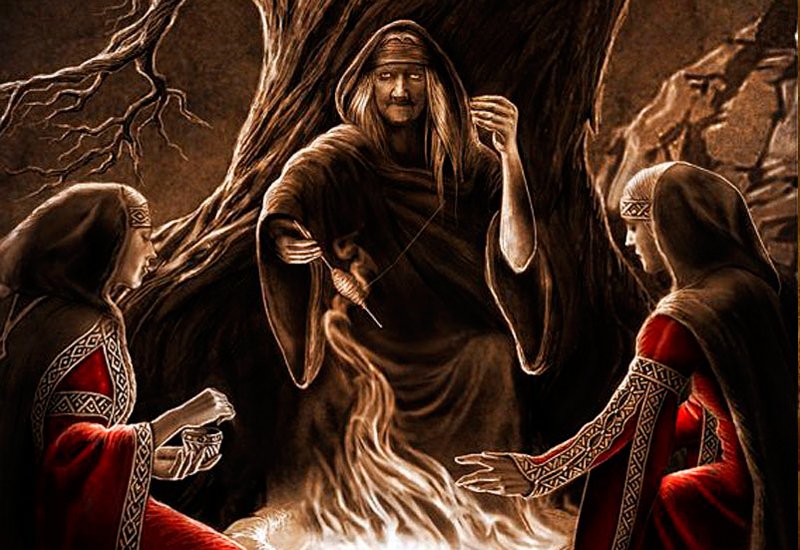
Slovenian goddess of death
In the mythological traditions of Europe we come upon the figure of goddess that stems from pre-history. This is the goddess of death and rebirth, that in the mythology of individual nations appears under different names. Basques call her Mari, Bretons Ankau, the Irish Morrigan, Lituania Regana, Germans lands Frau Holle, Russians and some other Slavic peoples Baba Yaga. In india the goddess of death is identified with Kali, from the time of the beginning of Vedas.
In the late and middle Stone Age death comes as goddess bird, particularly bird of prey, later even more often snake goddess, symbol of the earth. Her messenger since pre-history has been the owl, who is even today still regarded as herald of death.
It is significant that the snake goddess from around 7th cent. BC wears a crown. The crown represents wisdom and wealth. The one who battles the great white snake and takes her crown, will know everything, understand the language of animals and will see all the hidden treasures. Crowned white snake is snake queen who rules among the snakes. In folklore myths about her have been preserved till today. If anyone touched her or did her harm, all snakes would immediately be after him and pursued him.
The word Baba, that we encounter in folklore, has only a frightening role today. She is commonly seen as a powerful, severe, ugly and wicked woman. Parents until not so long ago used to frighten naughty children: if you are not good, baba will come… The scary being is now only a reflection of the figure of the ancient goddess of death (and rebirth), which took refuge from christianity, into the myth and lost her ancient fearsomeness in the world of adults. In this meaning the name death replaced the initial name, while it retained the original name in the myths and in frightening of children.
Since Slavic languages are derived from the ancient Venetic language, we might surmise, that the initial Slavic meaning of the word baba is close to the original. We don’t know whether Baba was the goddess of death already in the Venetic pantheon, or whether it only embodied death.
Christianization displaced the ancient goddess of death and expunged it from public thought and memory. In the folklore she was preserved as the white woman with supernatural power, who does not give life but takes it away. In folk belief her figure was preserved only as Jaga baba, who has features of the witch or wild woman.
Memory of the ancient goddess of death has been preserved in the territory of the Alpine Slovenia in folklore, and in many place names. We come upon them in eastern Alps, but in a far greater number in Slovenian, than in the German-speaking parts.
In the author’s judgement, this is more evidence, that the territory of eastern and central Alps and the surrounding areas was once a unified cultural landscape, which belonged to the pre-historic Veneti. The metaphor of the goddess Baba remained alive throughout the Celtic and Roman times. The name Baba appears also in the Balkan mountains, in Carpathian mountains in Russia, in the Greek mountains Pindus and elsewhere. So the ancient goddess still appears in folklore of the region of ancient Carantania, in eastern Alps in Austria, and also in central Alps, in Tyrol and Bavaria.
In the medieval times christianity began to adapt to its own vision of the world doctrine, the pagan ancient myths that were still present in the folk beliefs. From the figure of mighty Baba, and also Jaga Baba, it created a wicked, horrible and mysterious woman, associated with the devil. All over Europe she is also known as the devil’s grandmother and a witch.
In Slovenian folklore there is essentially no difference between Baba and Jaga Baba – the witch. Both names appear with nearly the same meaning. The most original representation of the ancient goddess of death is preserved in the figure of Pehtra Baba.
Translated by: Aleksandra L. Čeferin
